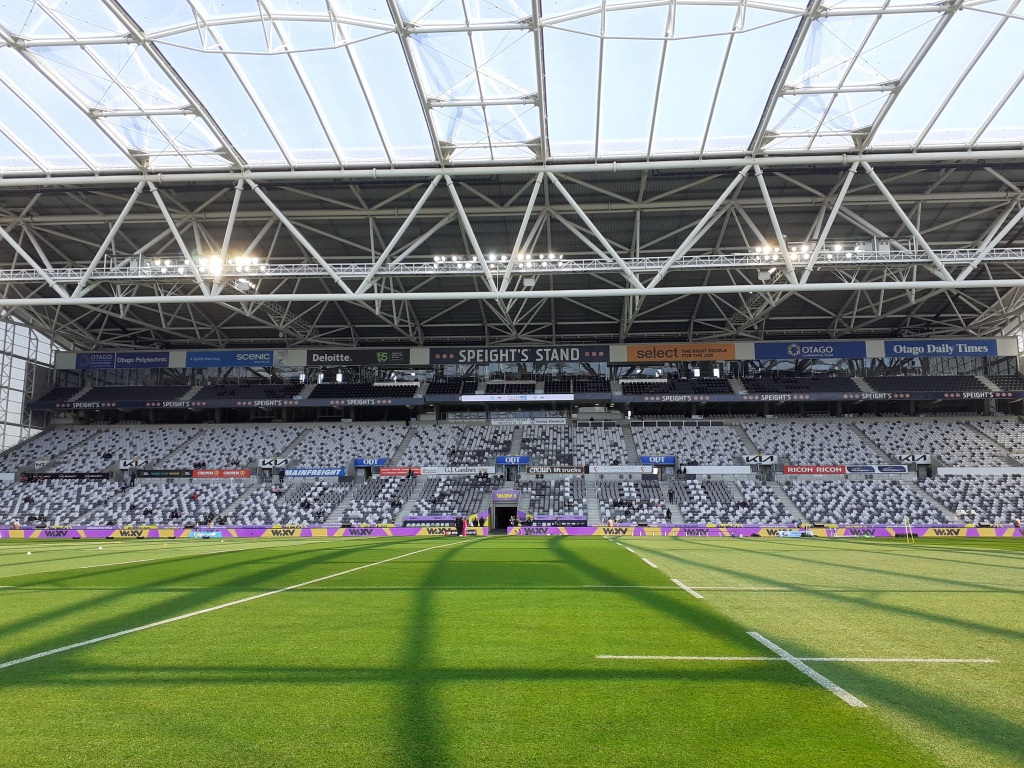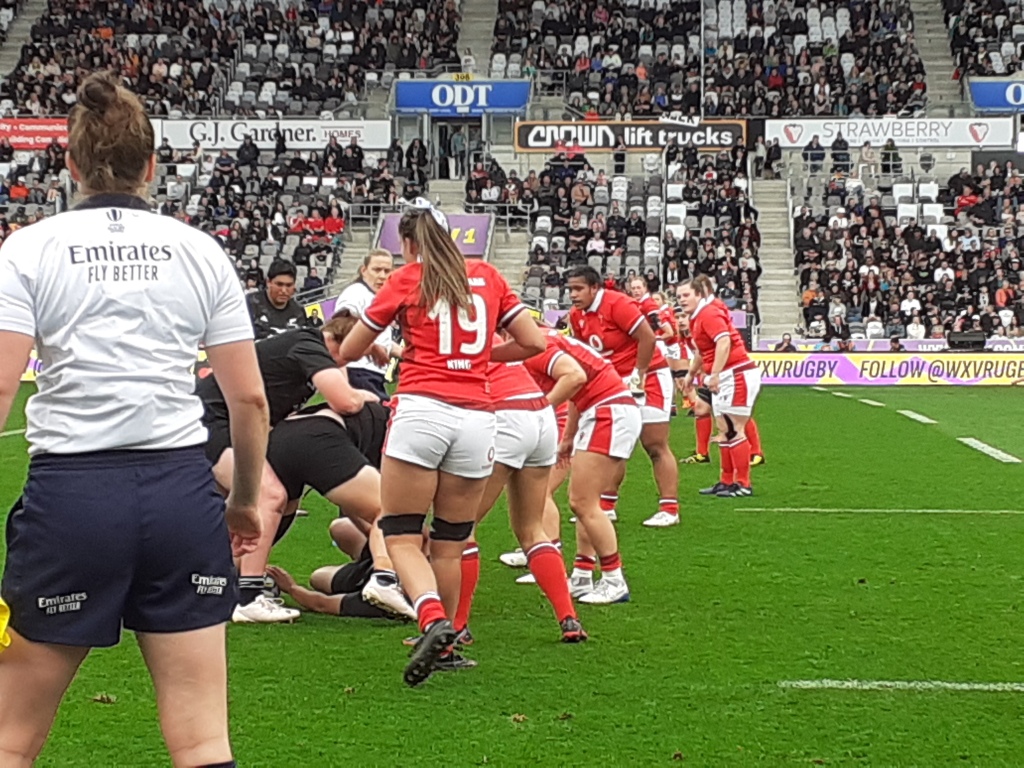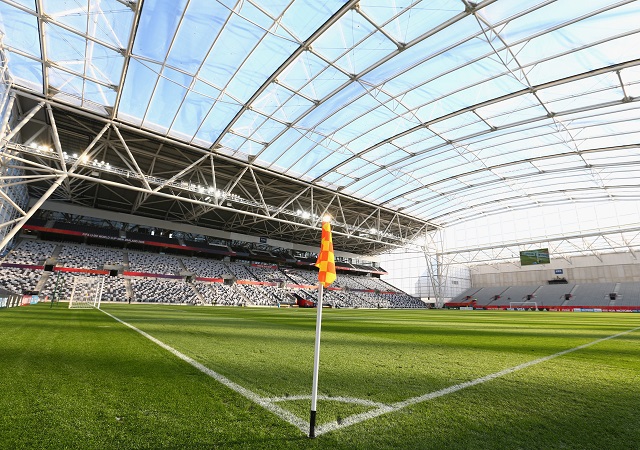Welcome back! I’m glad I didn’t scare you off from last week’s 2023 Rugby World Cup introduction blog, though it wasn’t that bad. It wasn’t that good, either.
In keeping with celebrating the Rugby World Cup that starts next month, I’m dedicating some blogs to discuss the tournament, purely because I love rugby.
After my intimidating intellectual introduction to the 2023 Rugby World Cup last week, this blog will focus on some of the most important pool games. To refresh our wonderful memories on the matter, the draw looks like this:
Pool A: New Zealand, France, Italy, Uruguay, and Namibia.
Pool B: South Africa (defending world champions), Ireland, Scotland, Tonga, and Romania.
Pool C: Wales, Australia, Fiji, Georgia, and Portugal.
Pool D: England, Japan, Argentina, Samoa, and Chile.
Before I discuss some of these pool games, let’s establish two key things:
1.) Every single pool game is important and deserves your attention, regardless of the two teams smashing each other.
2.) A lot of people like myself, will be following and supporting their team throughout the pool games. I’ll be watching the four New Zealand pool games live, even at stupid o’clock.
Having said those two things, because of my decades of one-eyed bias, I believe that eight pool games will dictate and impact the quarter-finals. To put it another way, these are the key games throughout the four pools. I’m not listing by importance, but the order in which they’ll be played. Also since the games will be played in France, the kick-off times are at local time.
1st Key Game: Pool A
New Zealand vs France (opening game): 8th September at 9.15 pm
The opening game will feature The All Blacks vs. Les Bleus and it will be dangerous. The All Blacks have been performing very well this year, though Saturday’s game against South Africa is something I’m still trying to process, to be honest. On the other boot, I think France is the second-best team on the planet, currently. The last time these two teams played, France won 40-25.
By hosting the World Cup, the French are going to be playing in front of their fans, so they’ll be extremely difficult to beat. They are such an excellent side, especially with their captain, Antoine Dupont, arguably the best player in the world.
In all honesty, the winner of this game will win Pool A, with the loser being the runner-up. The problem here is that whether it’s France/New Zealand or New Zealand/France, they will be facing the winner and runner-up of Pool B in the quarter-finals. That is a mind-numbing prospect. Do I know who is going to win this game? No, but there’s no way I’m missing it.
2nd Key Game: Pool D
England vs Argentina: 9th September at 9.00 pm
At this Rugby World Cup, there are two pools of death: Pool B and Pool D, with both pools having three possible contenders each.
The last time England played Argentina, it was the South American team that won 30-29. In my humble opinion, Argentina has made huge gains over the last 15 years. They can wear down and defeat anybody in the world, but they do struggle with an 80-minute performance.
England’s had some mixed results over the last two years. Adding in the factors of a new coach, a string of defeats, and some key suspensions leading into the World Cup, this clash will be highly important, considering the other team they will need to contend with.
3rd Key Game: Pool B
South Africa vs Scotland: 10th September at 5.45 pm
This is the first key game from Pool B. South Africa, the three-time and current world champions, are up against Scotland the Brave. The last time Scotland defeated South Africa was in 2010 at Murrayfield; this was before the MCU had taken over the world.
Scotland has won six games this year, so they have been progressing quite well; however their magical fullback, Stuart Hogg retired earlier in the year to the shock of many, including myself. In saying that, Scotland still has game-winning players like Finn Russell and Duhan van der Merwe.
South Africa has been doing what South African teams are famous are: producing monsters that dominate and grind teams into submission. These two teams have not played against each other for two years, so both teams will be fielding their top sides to deal with the carnage.
4th Key Game: Pool D
England vs Japan: 17th September at 9.00 pm
Regardless of what happens between England and Argentina, if England wants to progress to the quarter-finals, they will need to go through Japan. Maybe 10-15 years ago, nobody would have rated Japan at a Rugby World Cup. They’re easily the best team in Asia, but they were always a Tier 2 nation at best.
Over time, they have beaten teams like Canada, Tonga, the United States, Samoa, Fiji, Georgia, Argentina, and Romania. Then Japan rolled Wales in 2013, and Italy in 2014; however they had never won a Rugby World Cup game. That changed at the 2015 Rugby World Cup, when they defeated South Africa 34-32, to achieve their first-ever win at the tournament.
Since then, Japan has drawn against France and defeated both Ireland and Scotland at the 2019 Rugby World Cup in front of home fans. The last two years have been difficult for them, but the self-belief is there for the Brave Blossoms, so England vs. Japan will be very interesting.
5th Key Game: Pool B
South Africa vs Ireland: 23rd September at 9.00 pm
The current world champions playing the world’s number-one-ranked team in a pool match seems insane, but it’s true. Over the last 10 years, Ireland has slowly become a powerhouse in world rugby, and within the last three years, they have become the team to beat and the number-one-ranked team in the world.
Ireland’s work at the breakdown, coupled with set pieces, line breaks, and the ability to problem solve out of terrible situations, are the envy of the world. They are currently on an 11-game winning streak, but that will be put to the test against South Africa.
The South Africans have won the World Cup three times, with Ireland never progressing past the quarter-finals. Having said that, Ireland is going into the World Cup as one of the favourites to win it, and they will be desperate to do it. They are an amazing team, but they will need to overcome South Africa to get there. What a game that’s going to be!
6th Key Game: Pool C
Wales vs Australia: 28th September at 9.00 pm
Even though Fiji’s win against England in the weekend was impressive, I still believe the biggest game in Pool C is Wales vs. Australia. Both teams are very similar: they have endured some mixed performances against Tier 1 and 2 nations over the last three years, and they are both rebuilding, as well as having ex-coaches returning, in the forms of Warren Gatland and Eddie Jones, respectfully.
I get the feeling that this game will be more about the coaches than the players. Both Gatland and Jones are under massive pressure, because of their mixed results. They have been touted as the saviours of their team’s woes, so they will need the players to prove to their home countries, that they are still the right person for the job.
There’s a lot of history between Wales and Australia, so this game will be brutal.
7th Key Game: Pool B
Ireland vs Scotland: 7th October at 9.00 pm
Just like England and Japan, if Ireland wants to progress out of their pool, they need to go through Scotland. Currently, history is against Scotland, with Ireland winning the previous eight games. But the thing is, this is the World Cup and anything can happen.
Ireland would be quietly confident about this game, but we have no idea the condition of their players after the South African game. For all we know, half of the forwards could be injured, with some of the backs could be sitting on red cards.
On paper, Ireland should win this, but Scotland will not go quietly into the night. From the Scottish point of view, Ireland is in their way to reaching the quarter-finals, so they will start their A-side to battle them. This game will be crazy!
8th Key Game: Pool D
Japan vs Argentina: 8th October at 1.00 pm
Out of all of the key pool games, this could be the most explosive. Whatever team loses this game, could be going home. Yes, it does depend on England’s results against Japan and Argentina. I mean if England lost both games, then some of the pressure would have been let off for this game. However, if England wins against both Japan and Argentina, then this game will be utter carnage.
Both teams will need to be firing at full strength, and a draw may save one team, but doom the other. This game will feature the top team in South America vs. the top team in Asia, with a potential quarter-final berth as the prize.
It would also be remiss of me, not to mention the dangers Italy, Tonga, Georgia, Fiji, and Samoa will represent in pool games. They will be desperate to impress as well, along with the other remaining teams.
What pool games will you be watching? Have I missed any key pool games? Like always, please let me know.
This blog got away from me, like Bugs Bunny from Elmer Fudd. I was going to talk about rugby’s scoring system, so I promise to do it next week.
I need to get in some extra hours of sleep because I’m going to be losing a lot of it, through watching games and anxiety. Damn it, I just felt another hair turn grey.
Thanks once again for reading, following, and subscribing to Some Geek Told Me. This entire project is pure hubris, but it means a lot to me. Don’t forget to walk your dog; read a banned book; and please understand that releasing your mugshot on your social media account, is an own goal. I’ll see you next week.


































You must be logged in to post a comment.